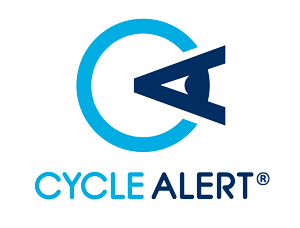With the ever increasing number of vulnerable road users (VRUs) including cyclists, motorcyclists and pedestrians, it is essential that drivers - professional and non-professional alike - understand and work to reduce the risks of driving in today’s urban environments.
Cyclist focussed driver training courses have, in recent years, proven particularly effective in providing drivers with unique insight into the motivation and behaviours of VRUs, ergo equipping drivers with the skills needed to reduce their risk to others on the road.
The Safe Urban Driving course is designed for professional drivers and anyone who drives an LGV or PCV as part of their employment and is delivered by trainers approved to provide periodic training. The course places a particular focus on cyclists and includes a practical ‘on-road’ cycle training element that gives a driver a ‘real life’ experience as to a cyclist’s perspective of riding on London’s roads. Attending a Safe Urban Driving course is also a mandatory requirement under the recently published CLOCS ‘Standard for construction logistics: Managing work related road risk (WRRR)’ and attending the course can also count towards the 35 hours DCPC that professional drivers need to complete every 5 years.
The Safe Urban Driving course provides a driver with the knowledge, skills and defensive driving techniques to deal with the ever increasing challenges of driving within the busy urban environment. The course consists of two 3.5 hour modules, one classroom based and one practical module where drivers can get on bikes and get a cyclists view of the road.
Further objectives for trainees attending the safe urban driving course are to define who vulnerable road users are when assessing risk, to gain information about road accident statistics involving LGVs/PCVs and VRUs, and to raise awareness of the risks to cyclists and hot to assess a situation to reduce risk.
Course objectives:
- To outline how and why urban streetscapes are changing
- To identify road users who are vulnerable and why
- To highlight a driver’s responsibilities
- To gain experience of the issues faced by vulnerable road users
- To promote techniques and technology to improve road safety
- To review attitudes through reflection and critique to improve driving practices
Theory content:
- The changing streetscape and the urban environment
- Vulnerable road users and sharing the road safely
- Defensive driving techniques and actions in the event of an emergency incident
Practical content:
- Exchanging places, driver attitude and perception
- Introduction to active travel, driver fitness and health
- Hazard recognition: understanding the issues faced by vulnerable road users
Alternative courses, such as 2WheelsAware, are also available to people who drive as part of their work, for example delivery drivers, taxi drivers, drivers of smaller lorries, minibuses and emergency services vehicles.
This 2WheelsAware course is designed to equip drivers with the skill to deal with today’s roads and make them better able to safely share those spaces with more vulnerable road users.
Topics covered in the course include:
- Why cycle?
- Drivers’ experiences
- Sharing the road: on-road scenarios covering common hazards for cyclists and how to avoid them, parked cars, visibility at junctions, roundabouts and complex road situations (including cycle facilities such as cycle lanes)
- Collision avoidance and defensive driving/riding
- Understanding other road users’ behaviours
- Introduction to active travel including some elements of the National Cycle Training Standards (depending on driver’s ability and experience)
- Issues faced by vulnerable road users
Mutual respect is key to staying safe on the road. Every road user has their part to play, but there are some points that HGV drivers and cyclists respectively can bear in mind:
Please feel free to add to these, just email with your suggestion and we will add it in (if it is clean!).
For more information on how to book your course please use TfL’s training site, here
In the mean time, here are some short reminders:
Give cyclists Room
Please give people on cycles plenty of space when overtaking them, leaving as much room as you would a car. Remember that cyclists may need to manoeuvre suddenly to avoid potholes and other hazards. The same goes for windy weather where strong gusts could cause a cyclist to swerve suddenly
Use your senses
Look out for those vulnerable road users who may weave through the traffic. Check your near-side blind-spot every time you turn left and check over shoulder for other VRUs before opening your door. Make sure your side windows are clean at all times and that the view through your windscreen is not obscured in any way by items attached to the glass or placed on the dashboard.
Keep scanning your mirrors
You must keep checking your mirrors, especially when approaching junctions in case a cyclist or other vulnerable road user enters your blind spot. Longer vehicles often need to swing out to the right before turning left to have sufficient clearance—some cyclists may not understand the reason for your manoeuvre and could be tempted to pass you on the nearside. Watch out for them! Before pulling away from junctions, look over the dashboard and try to establish eye contact with any cyclists to show that you can acknowledged them. Keep your mirrors clean and properly adjusted at all times to minimise any potential blind spots, particularly on the nearside. You should inspect the position of your mirrors as part of your daily driver checks
Advanced Stop Lines (ASLs)
Do not cross stop lines or encroach on advanced stop lines at traffic lights. ASLs allow cyclists to increase their visibility by getting in front of your vehicle. Allow cyclists time and space to move off when the green signal shows.
Be Patient
While many riders can keep up with the flow of traffic, please be patient with those less speedy and wait behind them until there is sufficient room to pass. Avoid sounding your horn which may unbalance some riders; tooting must only be used to warn of danger.


